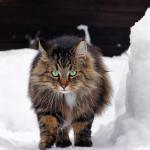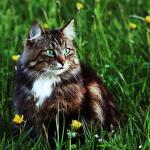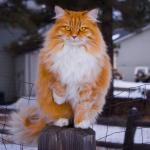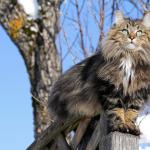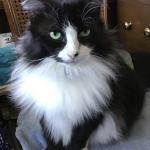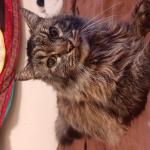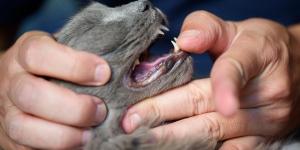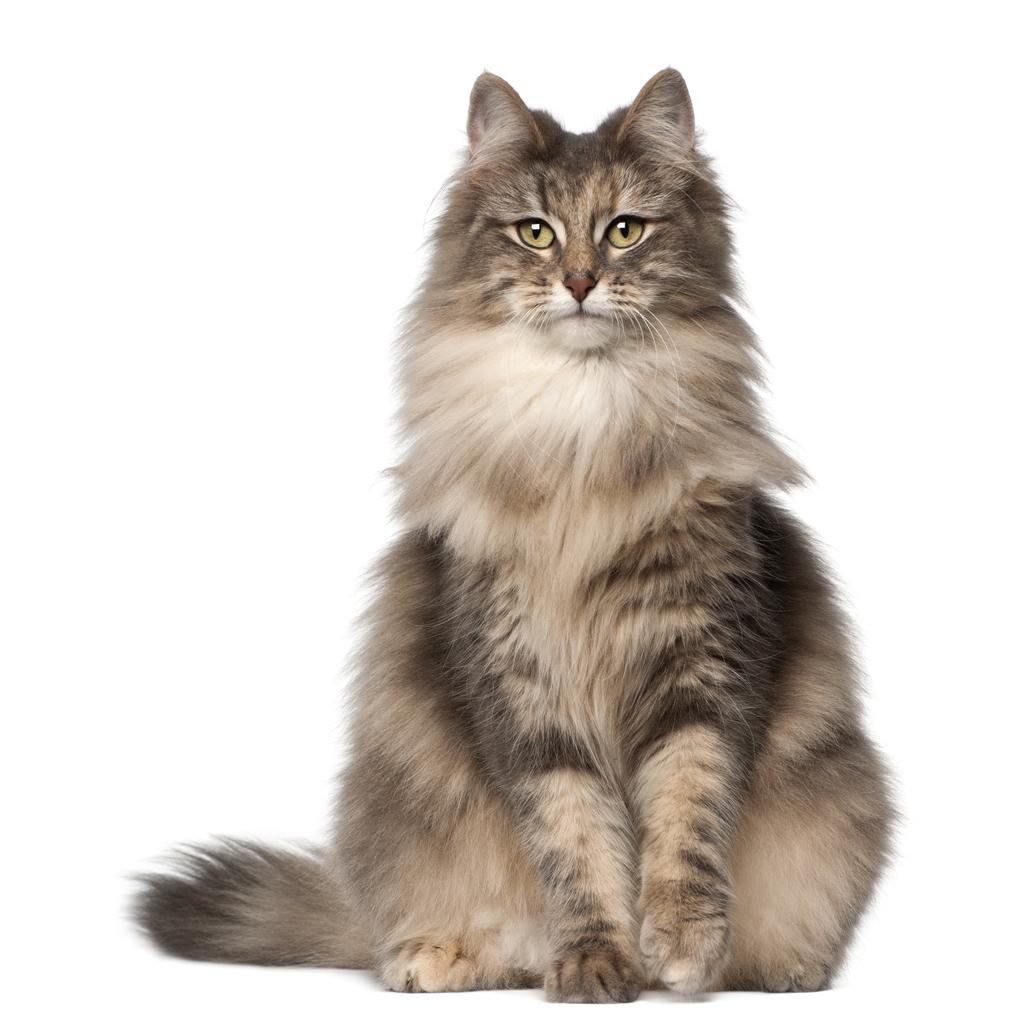Norwegian Forest Cat
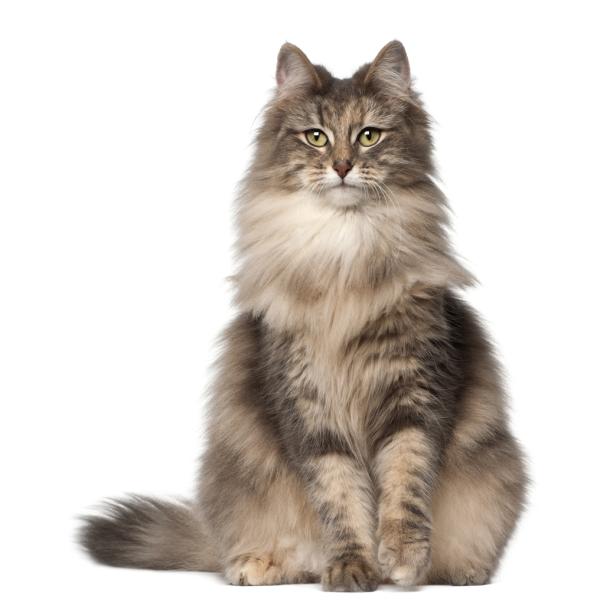
The Norwegian Forest cat, or ‘Wegie’ for short, is a domestic cat that hails from Northern Europe and is one of the most popular pets in Sweden, Iceland, France and of course, Norway. They are highly adaptable to cold climates because of their beautiful, abundant coat made up of water-shedding hair and a wooly undercoat. But with this coat comes great responsibility as an owner of this gorgeous breed.
Do you know what care the Norwegian Forest cat requires? Or the health conditions they are susceptible to? Find out all this and much more in this AnimalWised breedfile.
- Europe
- Norway
- Category II
- 7-11
- 11-13
- 13-17
- 17-22
- 22-30
- 8-10
- 10-15
- 15-18
- 18-20
Origin
No one can be completely certain as to when the Norwegian Forest Cat first came to be, but the breed appears in traditional Norwegian fairy tales and legends. They have a history that could perhaps go back thousands of years.
It is said their ancestors could be long-haired Turkish cats, like the Angora or the Siberian cat from Russia, from when Vikings brought them to Norway around 1000 AD. The ‘Wegie’ or ‘Skogcatt’ – Norwegian for “forest cat” - was often used to catch mice in stables and homes around Norway, for what people think may be centuries.
The breed was at risk of extinction during World War II, but the Norwegian Forest Cat Club helped combat this by creating an official breeding program. The Norwegian Forest Cat was registered as a breed by the Fédération Internationale Féline in the 1977, when a local cat fancier, Carl-Fredrik Nordane shone the light on them. Two years later, two Wegies were exported to the United States for the first time. As well as beloved pets to Norwegians, you can now find the domestic breed all around Europe and the U.S.
Physical Characteristics
If you have seen a Norwegian Forest Cat before you will know that they are big, beautiful cats. A male wegie can weigh between 13 to 22 pounds or more, and females are slightly smaller.
They are strong, built felines and larger than the average domestic cat. They have a long body, long legs and a thick bushy tail. As mentioned before, their characteristic coat is made of a water-repellent top layer and a woolly undercoat. This long haired cat is made to handle bitter cold temperatures in Norway and the rest of Scandinavia, so if you live in a cold climate, this breed could be great for you! Their hair is the thickest around their legs, chest and head.
Their head is quite long and is said to be the shape of an equilateral triangle. A square or round-shaped head is classes as a defect. They have almond shaped eyes and can be of any color. Their distinctive ears are large, wide at the base, high set, slightly triangular shaped and have lynx tips with long tufts of hair. All coat colors are accepted except chocolate and lilac and the dilutions fawn and cinnamon. Because of their strong and sturdy claws, they are known to be great rock climbers!
Temperament
The Norwegian Forest Cat isn’t just lovely to look at; they are gentle giants in the cat community. Although they are great with families and children, they are neither the most demanding nor affectionate breeds. They don’t constantly want attention or petting and will happily entertain themselves when alone. However, they do like to play. They make the perfect pet for for busy families or a hard-working individual that wants to take care of a cat but cannot devote too much time to them.
Although they are good with humans and like the company of their family, they aren’t too keen on visitors or strangers. Quite aptly, the Norwegian Forest Cat possesses a kind of reserved and contained Scandinavian demeanor. Therefore, they are not very vocal and only meow when they really need something.
As mentioned before, because of their large and athletic build and strong and sturdy claws, they are great climbers. Like many cat breeds, the wegie likes to climb to the highest points around a home and when outside you will find them embarking on a tree climb. They are hunters at heart. Because of their history as a farm cat, and with the help of their magical water resistant fur, they are known to dabble in fishing as well. We advise you to keep any pet fishes away from reach, if possible!
The Norwegian Forest Cat is a calm, intelligent and highly independent cat who will pick up things very quickly. We recommend intelligence games to keep their mind stimulated.
Caring for a Norwegian Forest cat
These strong and independent cats have always adapted well to outdoor living in cold climates, but they have evolved to live indoors too. It is best to keep them inside to protect them from diseases spread by other cats, dog attacks, or any other dangers.
Because of their large size, they require more food than most other domestic breeds. However, instead of giving you an indication of daily portion size, we recommend you consult your trusted vet to determine exactly the right diet for them. With that said, these cats like to eat all day, so leave food out for them so they can nibble all day. Just ensure you choose high quality, nutritious cat food to ensure they are getting all the benefits from their feed.
Their gorgeous long coat is susceptible to shedding and generally requires more grooming care than other short haired breeds. Use a wire slicker brush or stainless steel comb and brush them every week, or as often as you can. It is best to do it as often as possible to avoid knots and tangles, particularly during molting season. These long haired beauties with their unusual coat means bathing is a bit of an experience. It can be hard to get their coat wet enough to wash them thoroughly. Luckily, they don’t need bathed very often, just when they get really dirty.
You must brush their teeth weekly to prevent dental disease. Also, their eyes will need to be wiped gently with a damp cloth to remove any discharge.
If you consider the five freedoms of animal welfare, cater to their basic needs and give them love and space when necessary, a Norwegian Forest cat can live between 14 and 16 years old.
Norwegian Forest cat health
As with all cats, the Norwegian Forest Cat is susceptible to many diseases. Any breeder that claims their wegie kittens have no health conditions should not be trusted. However, we condemn breeding and encourage adoption every time. So please do consider this before purchasing any kitten or puppy of any breed.
Norwegian Forest Cats most often suffer from hip dysplasia, hypertrophic cardiomyopathy and glycogen storage disease IV – we will go into these more in detail in a moment.
In an experiment directed by John C. Fyfea, Rebeccah L. Kurzhals, and others, it was concluded that a complex rearrangement in the wegie’s Glycogen branching enzyme (GBE1) can cause both a perinatal hypoglycemic collapse and a late-juvenile-onset neuromuscular degeneration in glycogen storage disease type IV[1]. Although this disorder is quite rare, it can prove fatal to cats that suffer it. There are DNA tests available for GSD IV, and it is highly recommended, sometimes required, to carry out the DNA test before using these cats for breeding.
The most common health problems in the Norwegian Forest Cat are:
- Glycogen Storage Disease IV: this rare heritable condition affects the metabolism of glucose. Most kittens with the disease are stillborn or die within a few hours of birth, but occasionally a kitten will not show signs until about 5 months of age and usually die within a few months.
- Hypertrophic cardiomyopathy: a form of heart disease that is inherited in some cat breeds such as the Maine Coon. Heritability has not been proven in the Norwegian Forest Cat.
- Polycystic kidney disease: a genetic condition that progressively destroys the kidneys. No DNA test for the disease is available for Norwegian Forest Cats, but the disease can be detected through ultrasound from as early as 10 months of age.
- Retinal dysplasia: an eye defect that causes spots on the retina, however it does not worsen the cat’s vision.
- Hip dysplasia: a hereditary defect of the hip socket. It can be mild, causing little or no pain, or it can eventually lead to severe lameness. Affected cats may move very slowly or avoid climbing and jumping.
- Fyfe JC, Kurzhals RL, Hawkins MG, et al. A complex rearrangement in GBE1 causes both perinatal hypoglycemic collapse and late-juvenile-onset neuromuscular degeneration in glycogen storage disease type IV of Norwegian forest cats. Molecular genetics and metabolism. 2007;90(4):383-392. doi:10.1016/j.ymgme.2006.12.003.
Norwegian Forest Cat photos


